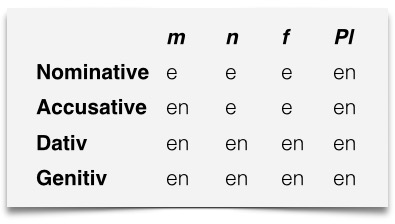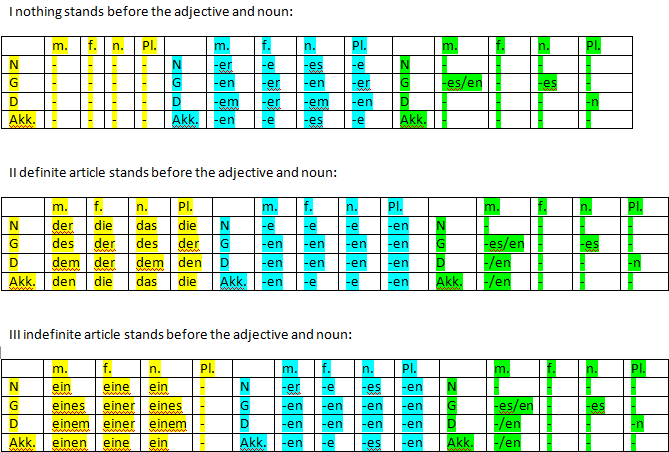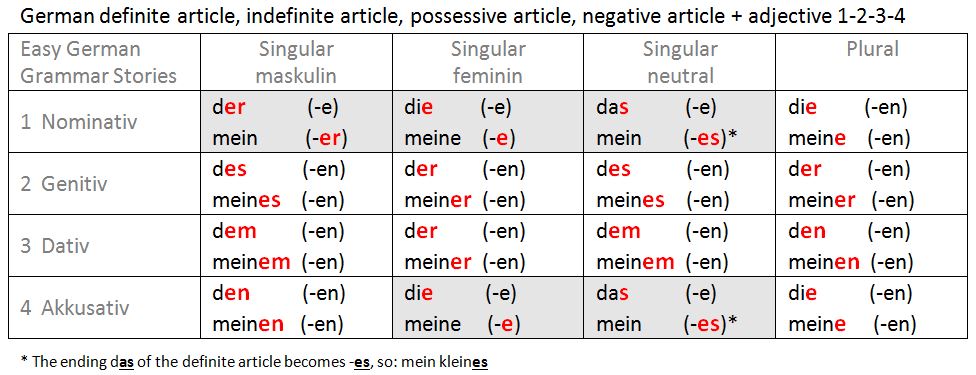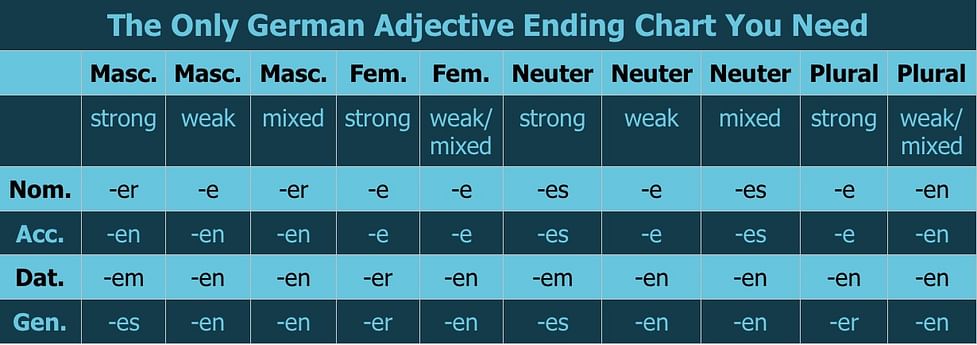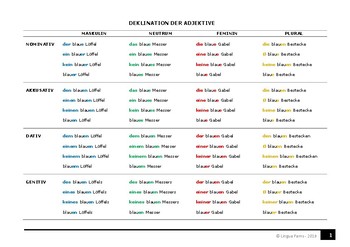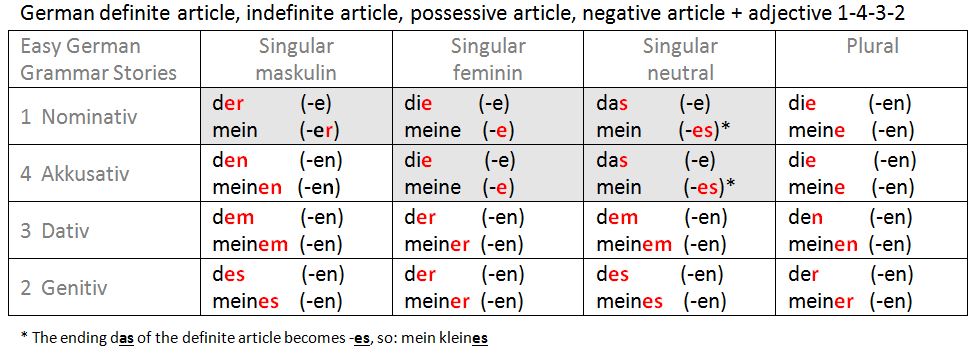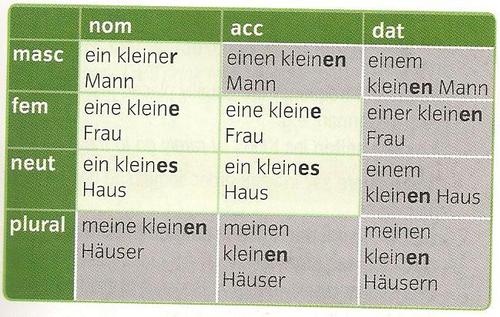German Adjective Ending Chart
German cases and adjective endings chart.
German adjective ending chart. And then there are additional declensions charts for determiners which like the charts for adjectives also get over-categorized into more sub-groups than necessary. Thats 160 separate words including 6 ways to say my another 6 for your and each of the other possessive adjectives determiners. There is too much to try to memorize every isolated word imagine that chart from above but x10.
No ending on an ein word is unique to singular nominative and singular accusative. Teaching Adjective Endings in German 381 which contain modified noun phrases. Your life with the German adjective endings will be a lot easier.
The grammar-police find that appalling but in fact the dative is actually the older form. Here I offer you some information on how to use my Famous Adjective Endings Chart to help you master these tricky German beasts. Just what that ending will be depends on several factors including gender der die das and case nominative accusative dative.
Die or an ein word ending in e eg. See the end of Reference section 1. Unlike English adjectives a German adjective in front of a noun has to have an ending - e in the examples above.
Possessive Adjectives the Smarter Way. This chart can be copied for every student and used as a tool to understand the system of ein-word endings der-word endingsadjective endings and even endings to use if there is no der or ein word previous to the noun. Ings required after der-words the weak endings.
In German grammar the case is indicated by the definite article. Before we step into the rules for using German adjective endings correctly I just wanted to mention an effective way to experience native German speakers using them. 4 rows With that out of the way lets look at the three different types of German adjective endings.
If you want to speak German well you need to work with formulas or patterns. Der die das - endings and noun meanings German definite and indefinite articles adjective endings Adjective only before nouns. Thenominative case endings were previously outlined on page one.
The conventional way to learn German adjective endings is with separate charts for strong weak and mixed declensions. From this arises the first of both the principles for the declension of the adjective. But most of the time the ending is an - e or an - en in the plural.
One simply builds a chart with each article fol-lowed by an adjective and a noun for three genders and the plural in all four cases ie 16 examples. You know that in German a noun always uses a certain case nominative dative etc. The procedure is to locate all instances of nouns preceded by the article der.
The ending em is unique to dative singular. Adjective endings reference tables. Accusative Dative and Two-Way Prepositions are on the chart also.
2 Steps to Always Get German Adjective Endings Right. German Grammar - Color Coordinated Endings Chart. Heres a truth about learning German.
Keine followed by an adjective which ends in en is always plural. Als Danke an alle Deutschlerner und Besucher die meine Seite unterstützt haben habe ich ein Download bereitgestellt. Theres the strong ending chart and the weak ending chart and its up to you to learn about them.
In normal speech German often use the dative after trotz and wegen. The German word for car is neuter and is the direct object of the sentence so the accusative case is used. If you make a point to write a lot of German text and keep the adjective endings all.
The adjective endings for the genitive case follow the same pattern as the dative. Case-endings are in principle identical. Wohin-nach zu and in setzen stellen legen hängen Motivation Online exercises Übung - Deklination bestimmter Artikel Exercise - definite article Exercise - indefinite article.
Das blaue T-Shirt ist schmutzig. The most common are statt and anstatt instead of trotz in spite of wegen because of and während during. FluentU takes authentic videoslike music videos movie trailers news and inspiring talksand turns them into personalized language learning.
Nearly everyone struggles with German adjective endings or German adjective declension as its also knownEvery textbook seems to contain endless tables and charts depicting similar adjective endings seemingly c.


